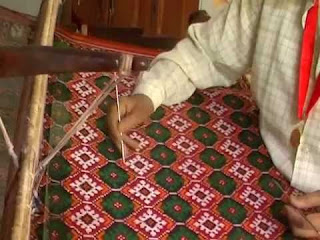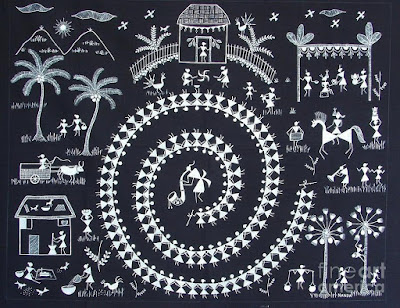Heritage legacy since 11th century: Patan ka Patola
Patola sarees flourishes from Patan, situated 127 km from
Ahemdabad located in Gujarat. Patola are double ikat woven silk saree which has
preserved India’s affluent and ancient heritage in textiles since 11th
century. In the Gujarati families,
patola saree is well chosen to bring luck and prosperity and every square in
the saree personifies security in all spheres of the life. The authentic work
doesn’t involve any computers or power looms. One saree is made with great
patience, deep focus, deliberate dedication and hard work. The handmade
authentic patola sarees are prominent for its colorful divergence and
geometrical designs and its display lures the connoisseur of exquisite
textiles.
Most significant is the Bandhani process which involves complex
and hard technique of tie and dyeing horizontally and vertically before
weaving. Paintings in Ajanta caves have the earmarks of Patola’s tie-dyeing
artistry. This process is build using natural dyes such as indigo, turmeric,
Natural lakh, manjistha, katha, pomengrate skin, henna, marigold flower,
ratnajyot etc which has given patan patolas their eco- friendly status.
Patola has an aristocratic past. According to legends King
Kumarpal of Solanki Empire called 700 families of Patola weavers from
Maharashtra and Karnataka regions to settle down in North Gujarat and endure
their traditional art. Today, out of 700 families only 3 Salvi families are
left to nourish this art. Thus, this craft is becoming endangered.
The ethnic and time- honored styles comprises of Chowkadi(
square), Chhabdi( basket), laheriya( strips), narikunjer, navratna, paan(
leaf), phulwadi( floral), panchphul( five flowers) and sarvariya etc.
Patola weaving is an extremely skillful craft which lasts over
300 years. A single saree is shaped within
a time span of one to two years and ranges from 1.5 to 10 lakhs and sometimes even costlier than
this.
This craft faces threat of extinction and if this heritage
craft should be preserved, then future generations should acquire this skill
for its survival.




Comments
Post a Comment